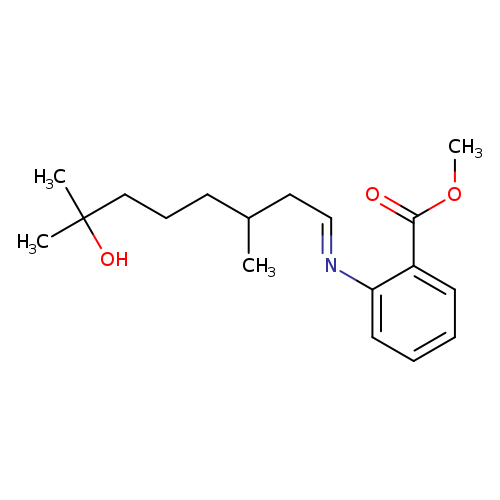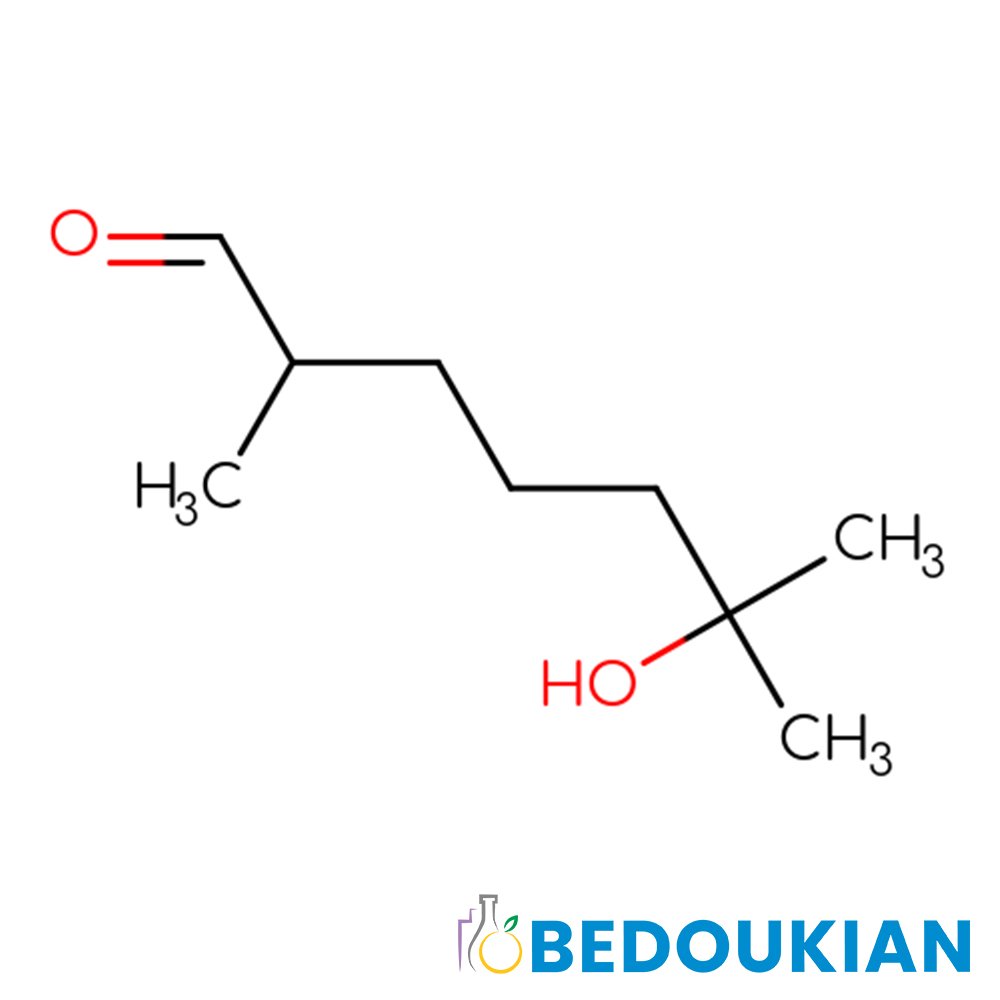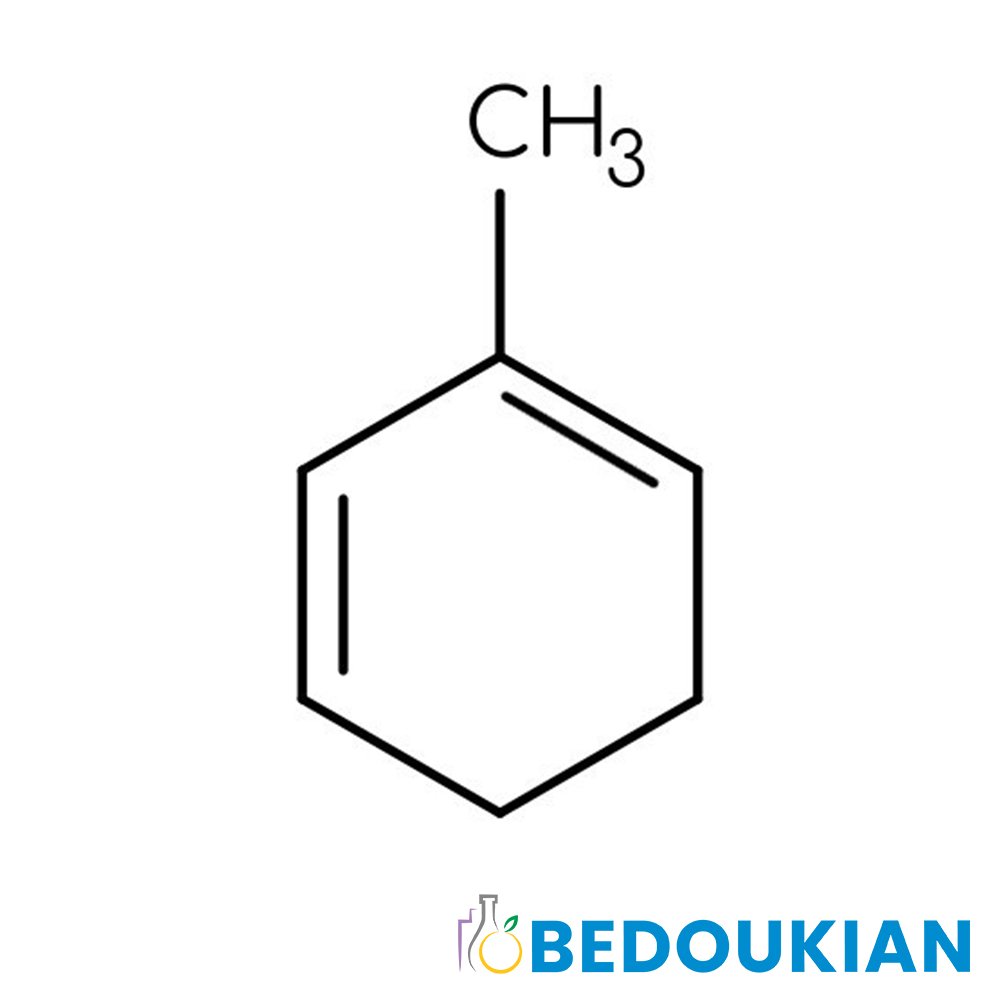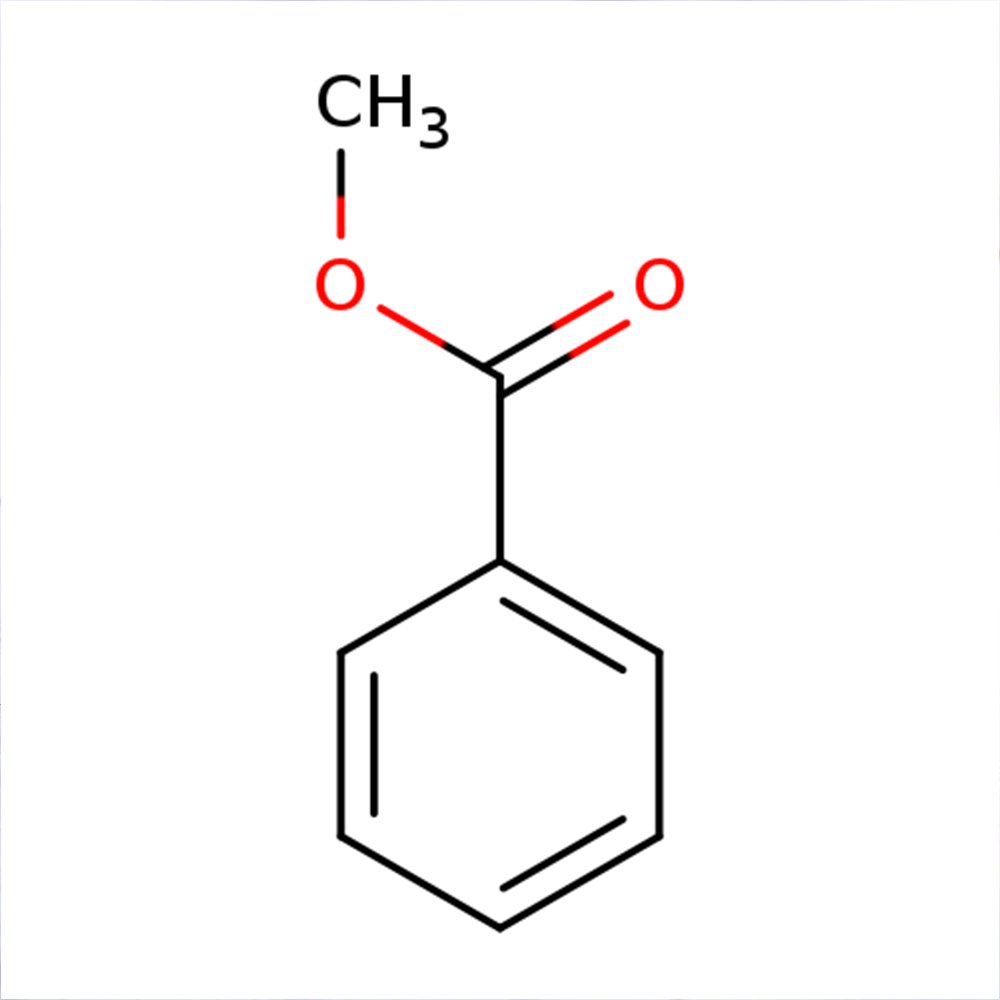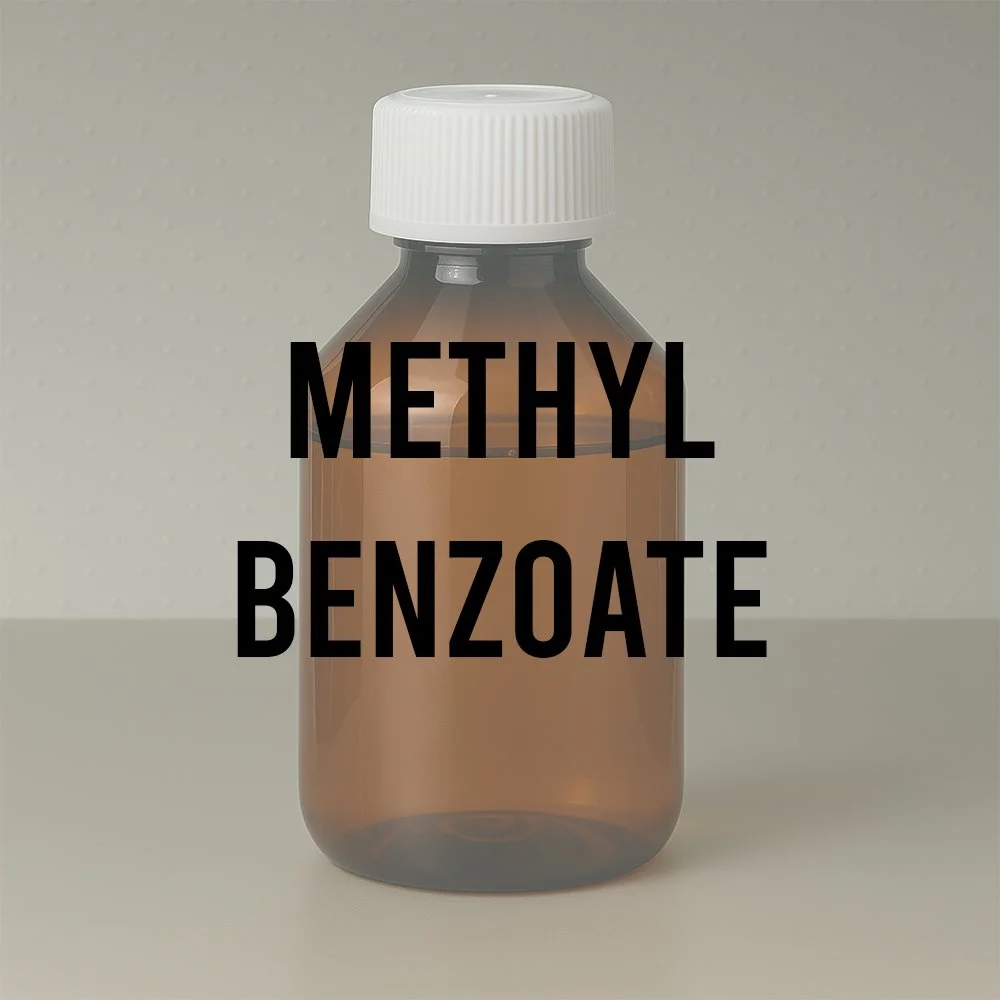Technical Ingredient Overview
🔎 Chemical Name — δ-Dodecalactone; 6-Heptyltetrahydro-2H-pyran-2-one
🧪 Synonyms — 5-Hydroxydodecanoic acid δ-lactone; δ-Laurolactone; 6-Heptyloxan-2-one; 5-Dodecanolide; (±)-δ-Heptyl-δ-valerolactone; Dodecan-5-olide
🧬 Chemical Formula — C₁₂H₂₂O₂
📂 CAS Number — 713-95-1
🔢 EC Number — 211-932-4
📘 FEMA Number — 2401
🌍 JECFA Number — 236
📋 FLAVIS Number — 10.008
⚖️ Molecular Weight — 198.30 g/mol
📝 Odor Type — Fruity-lactonic
📈 Odor Strength — Medium to high impact
👃🏼 Odor Profile — Peach nectar, coconut cream, condensed milk, buttery undertones. Fresh-fruity with oily richness and good tenacity. More fruity than γ-dodecalactone and less musky.
👅 Flavor Profile — Pear, peach, plum, butter, cream
⚗️ Uses — Fine fragrance (aldehydic perfumes, heavy florals, gourmand bases); flavor compositions (butter, pear, stone fruit complexes); functional fragrance (fabric softeners, personal care)
🧴 Appearance — Colorless to pale yellow liquid
What is Delta-Dodecalactone?
δ-Dodecalactone is a synthetic fruity-lactonic compound classified as a six-membered δ-lactone with a 12-carbon aliphatic chain. This cyclic ester belongs to the lactone family, characterized by its distinctive peachy, milky, and coconut-like aroma profile. The molecule exists as a racemic mixture in commercial perfumery applications, though enantiopure forms have been developed for enhanced realism.
Structurally, δ-dodecalactone features a tetrahydropyran-2-one ring system with a heptyl substituent at the 6-position. This structural arrangement positions it between fruity top notes and creamy base notes, making it a valuable bridging ingredient in fragrance composition. The compound is naturally present in trace amounts in milk fat, coconut, and ripe stone fruits, particularly peaches, though industrial applications rely on synthetic production.
In perfumery, δ-dodecalactone functions as both a modifier and a key structural component, enhancing roundness and volume in compositions. Its moderate volatility (log Kᵥ ≈ –5.5) and exceptional tenacity (persisting over 10 days on paper blotters) allow it to perform as both a heart and base note extender.
Historical Background
Discovery and Early Identification (1950s–1960s)
δ-Dodecalactone was first identified as a volatile compound responsible for the creamy, coconut-like note in heated milk fat by Patton and colleagues in the 1950s. The definitive isolation was documented by Tharp and Patton in 1960 in evaporated milk, quantifying it as a key component of dairy lactones.
The connection between δ-dodecalactone and fruit aroma was established when Do et al. (1969) detected the compound in peach aroma via gas chromatography, confirming its dual relevance in both dairy and stone fruit profiles.
Industrial Development (1980s–2000s)
Industrial synthesis became widespread in the 1980s through Baeyer–Villiger oxidation routes, enabling large-scale production for both fragrance and flavor applications. This period marked the transition from laboratory curiosity to commercially viable perfumery material.
In 2001, IFF introduced optically active (+)-δ-dodecalactone to improve realism in perfumery applications, addressing perfumers' demands for more authentic peach and dairy notes. This chiral innovation represented a significant advancement in lactone chemistry, as the enantiomerically pure form provided superior olfactory performance in certain applications.
Contemporary Production (2010s–Present)
Today, both racemic and chiral forms are available from major fragrance houses. Biotechnological production methods have gained traction due to sustainability concerns, with microbial fermentation of fatty acid precursors offering greener alternatives to traditional chemical synthesis.
Timeline of Key Developments
1954 — Early evidence linked δ-lactones to coconut-like notes in milk fat (Patton et al., Science, 119, 218–219)
1960 — Isolation in milk: Tharp & Patton isolated δ-dodecalactone via steam distillation (J. Dairy Sci., 43, 475–479)
1969 — Fruit origin confirmed: Do et al. detected δ-dodecalactone in peach aroma by GLC (J. Food Sci., 34, 618–621)
1984–1994 — Industrial scale: Baeyer–Villiger synthesis adopted by flavor houses
2001 — Chiral innovation: IFF launched enantiopure (+)-δ-dodecalactone
2010s — Green synthesis: Zeolite catalysis improved yield and reduced waste
2020s — Biotech era: Microbial conversion of ricinoleic or grapeseed oil
Olfactory Profile
Scent Family
δ-Dodecalactone belongs to the fruity-lactonic scent family, positioned at the intersection of ripe stone fruit and dairy cream. It shares structural similarities with other aliphatic lactones but distinguishes itself through its specific carbon chain length and ring size.
Main Descriptors
The primary olfactory characteristics include:
Peach nectar — Sweet, juicy, ripe stone fruit character
Coconut cream — Rich, tropical, milky facets
Condensed milk — Sweet dairy creaminess
Buttery undertones — Subtle fatty richness
Fresh-fruity — Bright, natural fruit impression
Oily richness — Smooth, rounded texture
On dilution, the odor becomes more butter-like, while at low concentrations it exhibits pear, peach, and plum-like characteristics.
Intensity and Odor Strength
δ-Dodecalactone is classified as a medium-impact material with high tenacity. While not as overpowering as γ-nonalactone (Aldehyde C-18), it possesses sufficient strength to make its presence known in compositions at relatively low concentrations.
Recommended usage levels vary by application:
Fine fragrance: 0.1%–1.5%
Functional fragrance (fabric softeners): up to 1.5%
Flavor applications: 10–50 ppm
Tenacity and Longevity
The molecule persists for over 10 days on paper blotters, demonstrating exceptional substantivity. This longevity makes it valuable not only as a heart note but also as a base note extender, contributing to the lasting impression of fruity-creamy accords.
Volatility and Note Classification
Its moderate volatility (log Kᵥ ≈ –5.5) allows it to act both as a heart and base note extender. This positioning gives perfumers flexibility in accord construction, as the material can bridge the gap between volatile top notes and tenacious base materials.
Note classification:
Primary: Heart to base note
Secondary function: Top note modifier (at higher concentrations)
Fixative properties: Moderate
Fixative Role and Synergies
The molecule has a synergistic effect with other lactones like γ- and δ-decalactone, aldehydes like C-14 peach, and musky ionones, where it enhances plush and creamy effects in fruity accords (Arctander, 1969).
Key synergistic partners:
Lactones: γ-Undecalactone, δ-Decalactone, γ-Nonalactone
Ionones: α-Ionone, β-Ionone, Methyl Ionone
Aldehydes: C-14 (Undecalactone), Aldehyde C-12 MNA
Musks: Ambrettolide, Galaxolide, white musks
Vanilla materials: Vanillin, Ethyl Vanillin, Coumarin
Applications in Fine Fragrance
In perfumery, δ-dodecalactone is used in fruit accords, especially peach and apricot, and in gourmand compositions for its milky-coconut undertones.
Primary Fragrance Applications
Aldehydic Perfumes
This lactone has an interesting effect in aldehydic perfumes, contributing creamy roundness and softening the metallic sharpness often associated with high aldehyde concentrations.
Heavy Florals
Particularly effective in gardenia and tuberose compositions, where it adds body and creamy depth without overwhelming delicate floral facets.
Gourmand Bases
δ-Dodecalactone enhances volume and warmth in chocolate, custard, vanilla, and caramel accords. It reinforces the edible, comforting qualities that define modern gourmand perfumery.
Fruity Accords
The material excels in peach, apricot, plum, and tropical fruit constructions. It adds authenticity and natural ripeness that synthetic fruit notes alone cannot achieve.
Example Accords
Peach Skin Accord:
δ-Dodecalactone: 15%
γ-Undecalactone: 10%
Aldehyde C-14: 5%
β-Ionone: 3%
Linalool: 20%
Benzyl Acetate: 30%
Ethyl Maltol: 2%
Coumarin: 5%
Ambroxan: 10%
Coconut Cream Accord:
δ-Dodecalactone: 20%
γ-Nonalactone: 5%
Vanillin: 15%
Heliotropin: 10%
Coumarin: 15%
Tonka Absolute: 5%
Sandalwood: 20%
Ambrettolide: 10%
Tropical Milkshake:
δ-Dodecalactone: 12%
γ-Dodecalactone: 8%
Ethyl Maltol: 10%
Pineapple Base: 15%
Mango Base: 10%
Vanilla Absolute: 8%
Benzyl Salicylate: 20%
Iso E Super: 17%
Commercial Fragrance Examples
Notably, δ-Dodecalactone is listed as a key creamy-fruity note in Pink Palm by Good Chemistry (2024). The ingredient also appears in numerous mainstream and niche fragrances, though specific formulations remain proprietary.
Functional Roles in Composition
It is used to soften sharp top notes and improve the bloom and diffusion of compositions. This makes it particularly valuable in:
Smoothing citrus-heavy openings
Rounding out green and herbal facets
Adding body to transparent woody-musky bases
Enhancing skin-like warmth in intimate fragrances
Performance in Formula
Behavior in Blends
δ-Dodecalactone demonstrates excellent solubility in alcohol and typical perfumery carriers (DPG, IPM, TEC). It shows good stability in both oil and water-based systems, though care must be taken in highly alkaline formulations where ester hydrolysis may occur over extended periods.
Solubility profile:
Ethanol (96%): Fully miscible
Dipropylene Glycol: Fully miscible
Water: Poorly soluble
Fixed oils: Soluble
Impact on Overall Composition
The material contributes three-dimensional depth to fruity accords that might otherwise appear flat or synthetic. Its creamy undertones create a sense of "mouthfeel" in fragrance, analogous to how actual lactones function in flavor systems.
Key performance characteristics:
Adds volume without weight
Enhances diffusion and projection
Provides structural support in heart notes
Extends longevity of fruity facets
Creates perceived "naturals" in compositions
Compatibility and Stability
δ-Dodecalactone shows excellent compatibility with most fragrance materials. It remains stable under normal storage conditions and demonstrates good resistance to oxidation when properly formulated.
Stability considerations:
pH sensitivity: Avoid pH > 9 for extended storage
Temperature: Stable up to 50°C under normal conditions
Light: Minimal photodegradation
Oxidation: Good resistance; use of antioxidants recommended for extended shelf life
Dosage Guidelines by Application
Fine Fragrance:
Fruity florals: 0.5%–2%
Gourmands: 1%–3%
Aldehydics: 0.2%–1%
Orientals: 0.5%–1.5%
Functional Fragrance:
Fabric softeners: 0.5%–1.5%
Shampoos/body wash: 0.2%–0.8%
Candles: 0.5%–1% (depending on wax compatibility)
Detergents: 0.3%–1%
Industrial & Technical Uses
Flavor Applications
δ-Dodecalactone holds FEMA GRAS status (FEMA 2401) and is approved for use in flavor compositions. It is applied in flavor formulations at trace levels (10–50 ppm) to mimic butter, pear, and stone fruit notes.
Flavor categories:
Dairy: Butter, cream, milk, cheese
Fruit: Peach, pear, apricot, plum, tropical fruits
Bakery: Cake, pastry, custard enhancements
Beverages: Fruit drinks, smoothies, dairy beverages
Functional Fragrance Applications
Beyond fine fragrance, δ-dodecalactone finds extensive use in:
Personal Care:
Shampoos and conditioners (creamy, comforting notes)
Body lotions (skin-compatible, soft warmth)
Shower gels (fruity freshness with staying power)
Home Care:
Fabric softeners (long-lasting freshness)
Laundry detergents (fruity-clean impression)
Air fresheners (tropical, inviting character)
Candles:
Soy/paraffin wax blends (good throw and stability)
Fruity gourmand concepts
Tropical and summer themes
Technical Specifications
Physical properties:
Appearance: Colorless to pale yellow liquid
Specific Gravity (20°C): Approximately 0.95–0.97
Refractive Index (20°C): Approximately 1.450–1.460
Flash Point: >100°C
Boiling Point: Approximately 280–290°C (at atmospheric pressure)
Vapor Pressure: Low (suitable for substantive applications)
Regulatory & Safety Overview
IFRA Status
Based on research of IFRA Amendment 51 documentation, δ-dodecalactone is not restricted under IFRA 51st Amendment. The material can be used in accordance with Good Manufacturing Practices (GMP) without specific concentration limits.
IFRA compliance: No restrictions as of Amendment 51 (June 2023)
It is important to note that formulations containing δ-dodecalactone must still comply with all applicable IFRA Standards for other ingredients and with general safety guidelines.
EU Cosmetics Regulation (EC) No 1223/2009
δ-Dodecalactone (CAS 713-95-1, EC 211-932-4) is permitted for use in cosmetic products within the European Union under current regulations. The material is not listed among restricted or prohibited substances in Annexes II–VI of the Cosmetics Regulation.
EU Status: Permitted for use in cosmetics (subject to GMP)
FEMA GRAS Status
δ-Dodecalactone is recognized as GRAS (Generally Recognized As Safe) by FEMA under FEMA Number 2401. The FEMA GRAS assessment of lactones used as flavor ingredients was published in 1998 by Adams et al. in Food and Chemical Toxicology.
Regulatory designations:
FEMA: 2401 (GRAS)
JECFA: 236
CFR: 21CFR172.515
FLAVIS: 10.008
CoE: 624
Synthetic Routes and Production Methods
Traditional Chemical Synthesis
Industrially, δ-dodecalactone can be synthesized by Baeyer–Villiger oxidation of 5-hydroxydodecanoic acid. This classic route involves:
Starting material: 5-Hydroxydodecanoic acid or 2-heptylcyclopentanone
Oxidation: Treatment with peracid (e.g., m-chloroperbenzoic acid)
Lactonization: Intramolecular cyclization to form the six-membered lactone ring
Purification: Vacuum distillation and crystallization
Alternative synthetic routes include oxidation of 2-heptylcyclopentanone using a peracid, providing flexibility in industrial production.
Biotechnological Production
Modern production methods include biotechnological approaches via microbial fermentation of fatty acid precursors, such as ricinoleic acid or grapeseed oil derivatives. These biotech routes offer advantages in:
Environmental sustainability
Natural labeling potential
Reduced chemical waste
Potential for chirally pure products
Microbial strains capable of producing lactones through β-oxidation pathways have been developed, representing the future of sustainable aroma chemical production.
Green Chemistry Advances
Zeolite catalysis has been shown to improve yield and reduce waste in lactone synthesis, aligning with principles of green chemistry. These catalytic methods minimize the use of hazardous oxidants and improve atom economy.
Comparative Analysis: δ-Dodecalactone vs. Related Lactones
vs. γ-Dodecalactone
δ-Dodecalactone is a constitutional isomer of γ-dodecalactone, having one carbon atom less in its cycle and one more in its ramified carbon chain. The resulting smell is very peachy and fatty for both isomers.
Key differences:
Ring size: δ (6-membered) vs. γ (5-membered)
Odor character: δ is more peach/fruity; γ is more fatty/waxy with green edges
Tenacity: Both highly tenacious, δ slightly longer-lasting
Application: δ preferred for fruity-florals; γ for tropical-gourmand
vs. δ-Decalactone
δ-Decalactone (CAS 705-86-2) has a shorter carbon chain (C10 vs. C12), resulting in:
Odor: δ-Decalactone is more intensely coconut/dairy with peach undertones
Strength: δ-Decalactone is significantly more powerful
Usage levels: δ-Decalactone typically used at 0.05%–0.5%, while δ-dodecalactone at 0.5%–2%
Profile: δ-Decalactone more "creamy"; δ-dodecalactone more "fruity"
vs. γ-Nonalactone (Aldehyde C-18)
γ-Nonalactone represents an even shorter chain lactone with extreme potency:
Impact: γ-Nonalactone vastly more powerful (used at 0.01%–0.3%)
Character: γ-Nonalactone pure coconut; δ-dodecalactone peachy-coconut
Application: γ-Nonalactone for tropical/white florals; δ-dodecalactone for stone fruits
Tenacity: Both highly substantive, but γ-nonalactone has near-musk-like persistence
Sustainability and Environmental Impact
Natural Occurrence
δ-Dodecalactone is naturally present in trace amounts in milk fat, coconut, and ripe stone fruits like peach, establishing its presence in nature. However, natural occurrence has been reported in blue cheese, heated butter, pork fat, rum, sherry, and various cheeses.
The extremely low concentrations in natural sources make extraction economically and environmentally unfeasible, necessitating synthetic production for commercial applications.
Biotechnological Alternatives
Biotechnological production methods via microbial fermentation of fatty acid precursors have gained traction due to sustainability concerns. These methods offer:
Renewable feedstock utilization
Lower carbon footprint
Natural labeling potential
Reduced solvent use
Biodegradable production pathways
Biodegradability
As an aliphatic lactone, δ-dodecalactone is readily biodegradable through microbial β-oxidation and ester hydrolysis pathways. The material does not bioaccumulate and breaks down into fatty acids and simple organic compounds.
Environmental profile:
Readily biodegradable
Low bioaccumulation potential
Low aquatic toxicity at typical use concentrations
WGK 2 (slight water hazard)
Storage and Handling Recommendations
Optimal storage conditions:
Temperature: 15–25°C (avoid excessive heat)
Light: Store in amber or opaque containers to minimize photodegradation
Atmosphere: Sealed containers; minimize headspace and oxygen exposure
Shelf life: 24 months under proper storage conditions
Handling precautions:
Use in well-ventilated areas
Wear nitrile gloves and safety glasses
Avoid prolonged skin contact
Ground containers when transferring to prevent static discharge
Keep away from oxidizing agents and strong acids/bases
Stability: The material is stable at common pressure and temperature and should be sealed and stored in a cool, dry place, protected from oxides.
Internal Links and Related Materials
Related Scentspiracy Ingredients:
Gamma-Dodecalactone — Isomeric lactone with waxy-peach character
Gamma-Nonalactone (Aldehyde C-18) — Potent coconut lactone
Coumarin — Aromatic lactone; synergistic pairing
Milk Fragrance Base — Contains lactonic notes including δ-dodecalactone
Osmanthus ABS Synth 138 B — Features lactones including dodecalactone derivatives
Cocoa Extract Pure — Contains caramelic lactones; pairs well with δ-dodecalactone
Related Blog Articles:
IFRA 51st Amendment Explained — Understanding current regulatory landscape
Sources
Adams, T. B., Greer, D. B., Doull, J., Munro, I. C., Newberne, P. M., Portoghese, P. S., Smith, R. L., Wagner, B. M., Weil, C. S., Woods, L. A., & Ford, R. A. (1998). The FEMA GRAS assessment of lactones used as flavor ingredients. Food and Chemical Toxicology, 36(4), 249–278. https://doi.org/10.1016/S0278-6915(97)00144-2
Advanced Biotech. (2025). Safety Data Sheet: Delta Dodecalactone Natural. https://prod.adv-bio.com/SDS-US/1587sdsus.pdf
Arctander, S. (1969). Perfume and Flavor Chemicals (Aroma Chemicals) (Vols. 1–2). Self-published.
Do, J. Y., Salunkhe, D. K., & Olson, L. E. (1969). Isolation, identification and comparison of the volatiles of peach fruit as related to harvest maturity and artificial ripening. Journal of Food Science, 34(6), 618–621. https://doi.org/10.1111/j.1365-2621.1969.tb12092.x
FEMA (Flavor and Extract Manufacturers Association). (2001). FEMA GRAS List (FEMA Number 2401). https://www.femaflavor.org
Good Chemistry. (2024). Ingredient Disclosure: Pink Palm. Target Corporation.
International Fragrance Association (IFRA). (2023). IFRA Standards – 51st Amendment. https://ifrafragrance.org
JECFA (Joint FAO/WHO Expert Committee on Food Additives). (2000). Safety Evaluation of Certain Food Additives: δ-Dodecalactone (JECFA Number 236). WHO Food Additives Series No. 40. World Health Organization.
Patton, S., Forss, D. A., & Day, E. A. (1954). Characterization of volatile compounds from heated milk fat. Science, 119(3086), 218–219. https://doi.org/10.1126/science.119.3086.218
PubChem. (n.d.). Delta-dodecalactone (CID 12844). National Center for Biotechnology Information. Retrieved October 8, 2025, from https://pubchem.ncbi.nlm.nih.gov/compound/delta-Dodecalactone
Tharp, B. W., & Patton, S. (1960). Composition of milk fat. Isolation of δ-dodecalactone from steam distillates of milk fat. Journal of Dairy Science, 43(4), 475–479. https://doi.org/10.3168/jds.S0022-0302(60)90198-4
U.S. Food and Drug Administration. (2024). Substances Added to Food (21 CFR 172.515). https://www.accessdata.fda.gov


